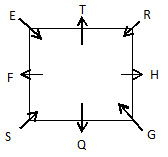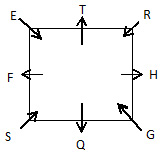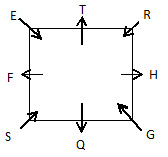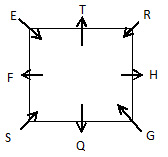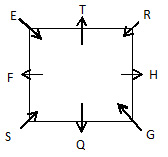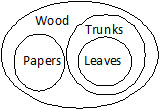Eight people- E, F, G, H, Q, R, S and T are sitting around a square table (but not necessarily in the same order) in such a way that four of them sit at four corners while four sit in the middle of each of the four sides. The ones sitting at the corners are facing the centre and the ones sitting in the middle of the sides are facing outside (i.e. opposite to the centre).
Q sits in the middle of one of the sides. Only two people sit between Q and R. Only one person sits between R and E. E is an immediate neighbor of both T and F. S sits to the immediate left of F. Only one person sits between G and S.
